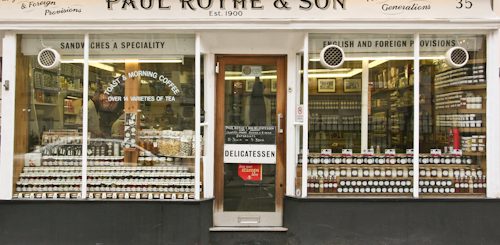{travelogue} Before the War, After the War: Beirut
{A note: This has taken me a long time to write–years, in fact–and I’m still not really satisfied with it. I have tried to put my thoughts and pictures together many times, but haven’t quite been able to get a handle on what I wanted to share. I find that with certain places I have traveled, what’s in my mind is very difficult to put on paper. So this is an imperfect attempt to do so, at best. I’m grateful not to be a writer on a deadline!}

Beirut is not on most Americans’ list of top travel destinations- but I would argue that it should be. With a picturesque seaside setting on the Mediterranean Sea, a location that’s been the epicenter of world change and growth for thousands of years, and a unique culture that’s a result of demographic diversity and strong national pride–what’s not to like?
Also: shawarma on every corner. The chicken and the lamb are standard, but I really go crazy for the Armenian soujouk (sausage.)

But when you hear “Beirut” what comes to the forefront of your mind are most likely the devastating news headlines you’ve heard since, well, approximately, your whole life. It’s true: Lebanon is no stranger to conflict and occupation. In the past century, the country hasn’t gone longer than a decade without suffering an invasion, an occupation, a conflagration, a siege, a massacre, a war, an assassination… you get the idea. For the moment, things are pretty peaceful, and there is a constant hum of rebuilding and reconstruction. This photo illustrates it best: in most views; you see something old and bombed, something new and shiny, and something under construction.

There are two periods that define modern Lebanese history: “before the war,” and “after the war.” “The war” is, of course, the Civil War that occurred between 1975 and 1990, including the intense Israeli bombing and siege of 1982, with later conflicts, occupations, and assassinations happening with alarming regularity up until nearly the present day. That means that for most Beirutis, war has played an inescapable role in your life. Ask an older person about history, customs, religion, education, language, culture, you name it–and your answer will almost certainly start with a “before the war” statement to provide context for the answer that relates to how things are now (“after the war.”) Because the war changed things. A lot of things.

Before the war Americans and Europeans used to say that Beirut was “the Paris of the Middle East” but Beirutis will point out that no one has ever, at any point in history, referred to Paris as “the Beirut of Europe.”
Before the war, in the early 1960s, my mother attended college at the American University of Beirut, a vibrant international Christian university that anchors the hip Hamra district. It’s still thriving; it was damaged during the war but it’s been restored. Her dormitory building and most of the main buildings persist. She’s hesitant to go back for a visit, because she isn’t sure she can handle after the war when her memories exist solely in the space before the war.

Before the war, sometime in the 1950s, our friend’s father opened up a factory and became the first business to put hummus in a can–a big innovation. Because of the war, it’s been hard to get new equipment, so even after the war, things are made with most of the same equipment that they used before the war.

Before the war, in the early 1930s, the Hochar family started making wine an old castle on a hillside just outside of Beirut. Interestingly enough, it was a different war that brought Gaston Hochar to wine-making. He met a famous European wine guy who happened to be stationed in Lebanon during World War II, which spurred him to turn his hobby into a full-time gig. If you call Chateau Musar for a tour and get a ride up the snaking mountain, they’ll show you around and take you down in their freight elevator to their spiderweb storage caves (the spiders are encouraged to live in the wine cellar, as they eat the bugs that eat the glue on the wine labels.) You can also see the amphoras that store the distilled arak that Chateau Musar makes. Arak is a grape-distilled anise liqueur that clouds when you add water, and the mingled scent of black liquorice and alcohol in the amphora room is enough to knock you out. Arak’s kin follow you around the Mediterranean basin in the form of Turkish raki, Southern French pastis, Greek ouzo, and so forth. Naturally, the Lebanese arak, made from grapes, is thought to be the very best form of this powerful beverage (at least by the Lebanese themselves.)

Also well before the war, probably somewhere around the beginning of the 20th century, the building that houses the current Hotel Albergo was constructed in the posh Ashrafieh district. It’s a great place to go if you want to feel like you’re in that part of Beirut that people used to call “the Paris of the Middle East” but which is actually just Beirut itself. The trip up to the ninth floor, complete with uniformed elevator man and old-fashioned cage elevator, transports you back in time before you’ve even had a chance to find a seat in the dashingly handsome lounge.
About 3,000 years before the war, the Romans built some of their finest structures in a very important town called Heliopolis, which now goes by the name of Baalbek and lies about 50 miles north of Beirut. The ruins are some of the best preserved and largest in the world. In fact, the ruins are all super-sized, so early explorers thought they had been built by giants. They are much bigger and more impressive than anything you will see in Rome or Greece, but after the war, not that many people visit, so it’s very peaceful to go there.

More than 8,000 years before the war, people began to settle in Byblos, and they haven’t left since. Layer upon layer of human-made buildings can be found in the ground of this seaside port town just north of Beirut. In the Phoenician heyday, around 4,000 years before the war, they pretty much invented the Greek alphabet in Byblos. In fact, the word “bible” is derived from the name “Byblos.” After the war, Byblos has more tourists than Baalbek, but it’s still a serene and beautiful place to visit, look at the sea and the ruins, and mentally sift through all the layers of history beneath your feet.

But now it is after the war, so some things have changed and some things have stayed the same. For example, part of this Paris business stems from the fact that Beirutis of all ages are being fantastically stylish and vibrant; pack your high heels and your most fashionable outfit (same.)
After the war, you can still go to the grand old Phoenician Hotel for a cocktail or a coffee (same.) You may have to go through a metal detector to get in (different) and you may notice the old Holiday Inn next door now bears some of the deepest scars of the war (also different.)

After the war, you might go bar-hopping on a street called Gemmayzeh. It used to be the “Green Line” that divided the two sides of the Civil War, but it’s not polite to talk about that because it’s called Gemmayzeh now (different.)
After the war, everyone stays up late (same!) To wit: the spectacle of Music Hall, a subterranean Saturday night show that starts around 11 PM and doesn’t stop until nearly dawn. A variety of performers (from opera stars to classical guitarists to rockers to singer-songwriters to… well, you never know with Music Hall) gets 2-3 songs to show off, and that’s it. (Too cool for a website apparently, but here’s the phone number for tickets.)

After the war, a lot of Americans are under the misconception that Lebanon is a Muslim country. In fact, Lebanon has the most religiously diverse population in the Middle East. Officially, the Lebanese government recognizes 18 religious sects that are represented in government, with about half of the total being Muslim (split between Sunni, Shia, and 2 other branches,) and the rest being Maronite Christians, Greek Orthodox, Greek Catholic, and several other Christian sects, plus a small but influential cohort of Druze, a mysterious and somewhat esoteric religious group found in Syria, Lebanon, and Israel. That doesn’t mean you can’t have a preposterously beautiful mosque, though. After the war, and after his father Rafiq Al-Hariri was assassinated, his son Saad Al-Hariri dedicated the Al-Amin Mosque, which was built next right next door to the St. George Church. Religious parity at its finest (and a stunning sight at night.)

Before and after, and everywhere in between, Beirut is a very special place to visit. Have you ever been to Paris? It’s like the Beirut of Europe. You should take a trip to Lebanon to experience the original someday.






Hi there , as an Armenian born in Beirut/LEBANON in 1947 and now as a BRITISH since 1979. i was very touched and impressed by your astute and sincere observation about Paris of the East, keep the good work i really do appreciate your views..GOD BLESS! Isahak
@Isahak thank you so much, that really means a lot to me! I really appreciate the comment.